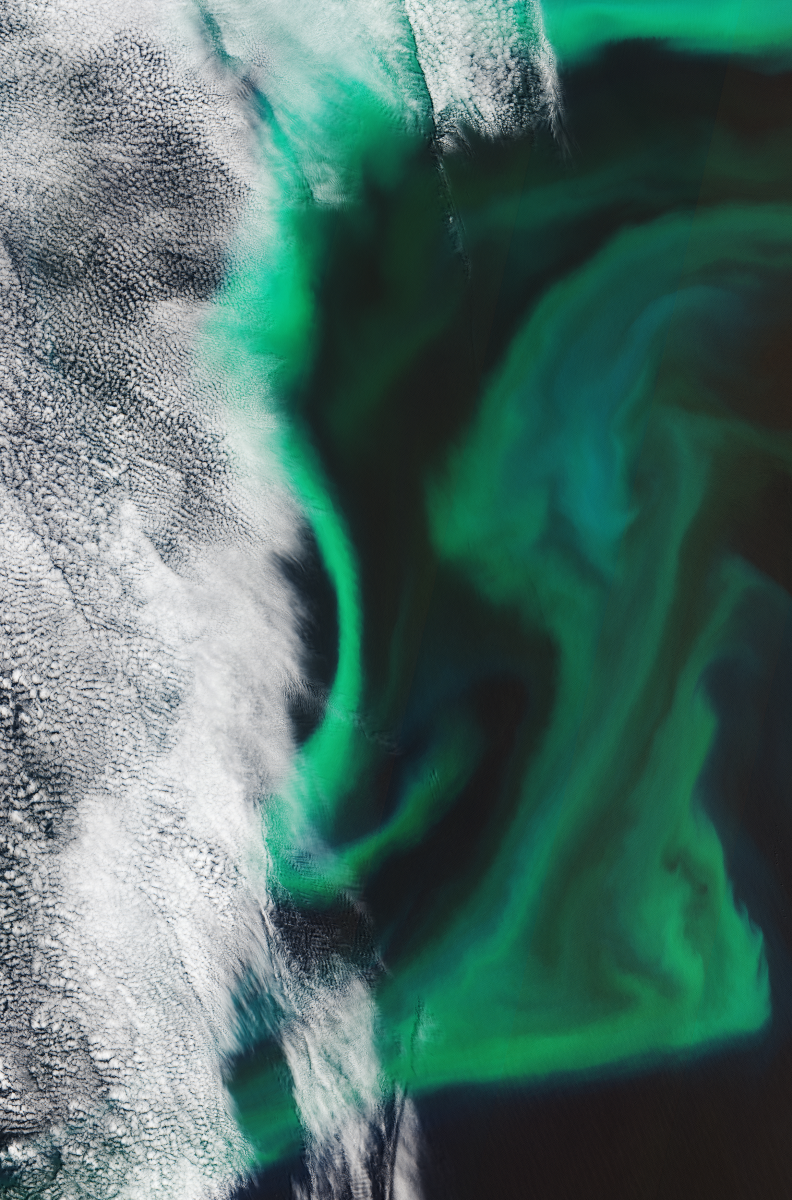Published on 11 February 2021
This wonderful image acquired by Sentinel-2 reveals algal blooms swirling around the Pacific Ocean off the coast of Japan.
Image acquired on 14 June 2019 about 130 km off the island of Hokkaido, Japan's second largest island. It shows part of the algae 'bloom' that was over 500 km in diameter and 200 km wide. Click on the image to view it on the ESA website at its full 10m resolution and learn more about its characteristics by clicking on the circles.
© Contains modified Copernicus Sentinel data (2019), processed by ESA, CC BY-SA 3.0 IGO
Algal blooms are caused by a rapid multiplication of phytoplankton, which is made up of a set of microscopic unicellular or pluricellular plants in suspension in the water. It is the chlorophyll content of these organisms that is responsible for this particular colouration of the ocean in places where it develops massively, such as when a warm current collides with a cold current and causes eddies and upwelling of nutrients from the depths of the ocean to the surface.
Algal blooms are a natural and essential part of marine life, but human activity can increase their number. Harmful algal blooms can be stimulated by environmental factors such as light, higher water temperatures and excess nutrients.
Phytoplankton plays a crucial role in ocean biology and the climate system. As the first link in the food chain in the marine ecosystem, it also has an impact on the global carbon cycle through its photosynthetic activity. It absorbs carbon dioxide on a scale equivalent to that of all terrestrial vegetation.
It is therefore essential to understand the processes that influence the primary production of phytoplankton and to monitor in a coherent and systematic way the evolution of this productivity as ocean surfaces warm in response to the increase in greenhouse gases in the atmosphere.
World annual primary productivity from 1998 to 2018. In an article published in the journal Remote Sensing, scientists used data from the Ocean Colour Climate Change initiative to study long-term patterns of primary production and its inter-annual variability.
©Ocean Colour CCI, Plymouth Marine Laboratory/ESA
Satellite data can be used to monitor the growth and spread of harmful algal blooms in order to alert and mitigate adverse effects on the tourism and fishing industries. Recently, they have also proved fundamental in providing a global view of phytoplankton, its role in climate change and its response to it.
This was shown in a study carried out within the framework of ESA's BICEP (Biological Pump and Carbon Exchange Processes) project and detailed in the article Shedding light on the ocean’s living carbon pump.
